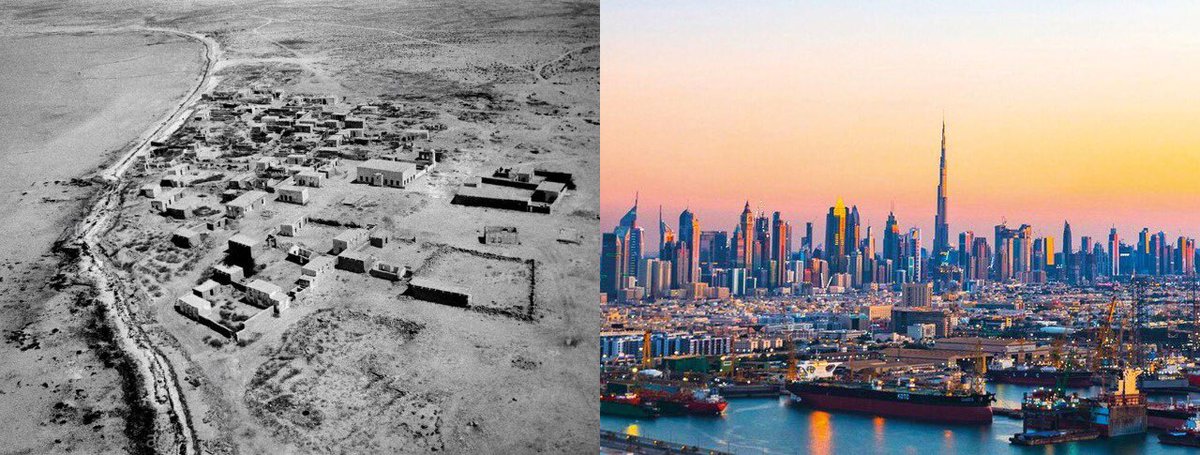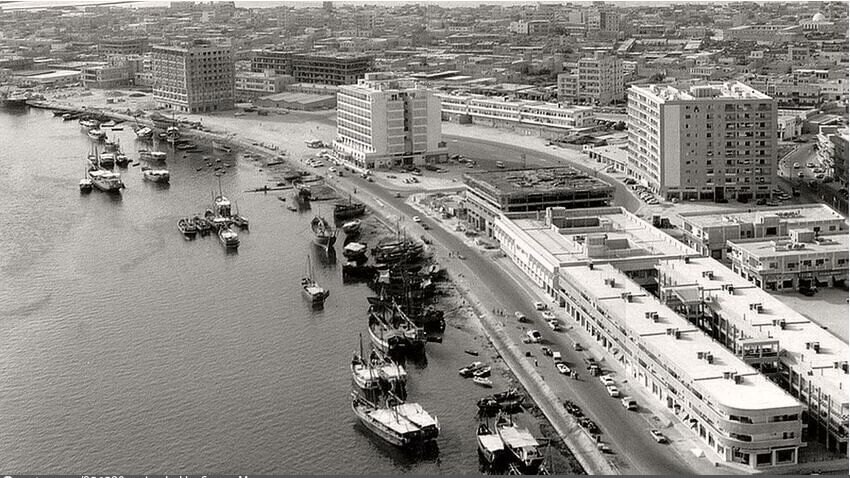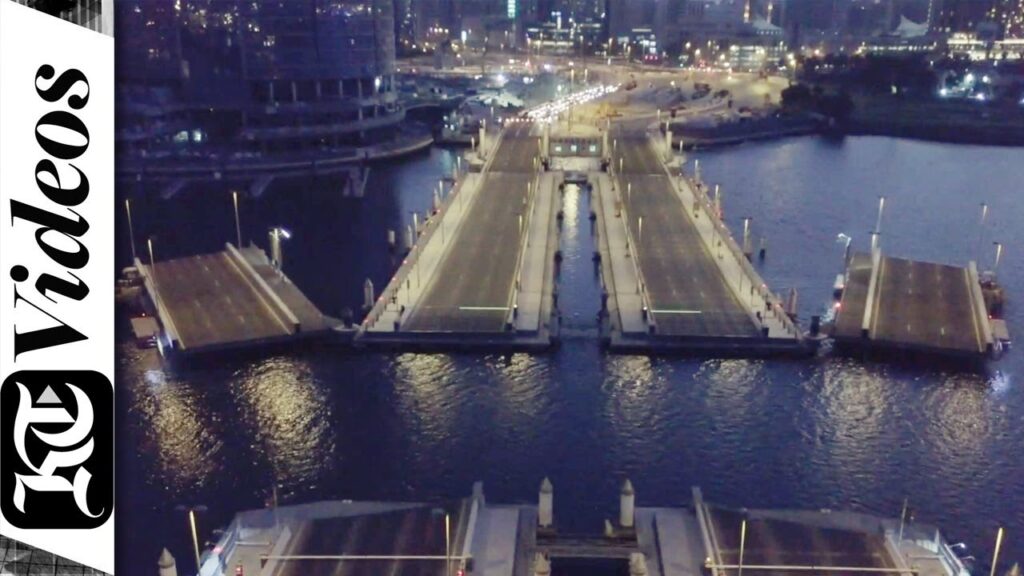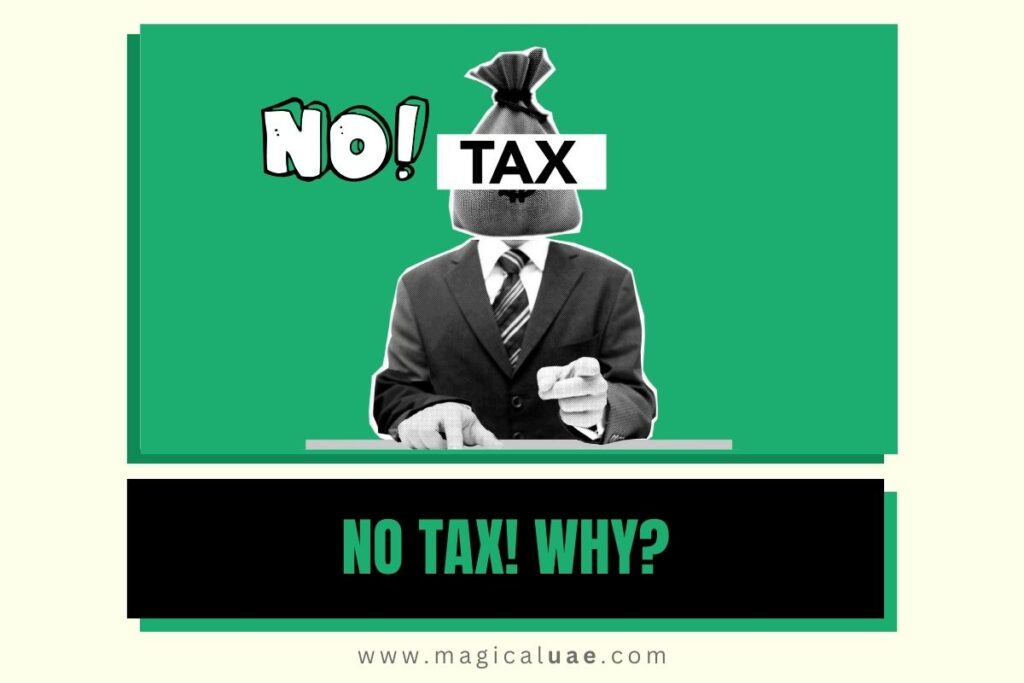Dubai in 1970 was a modest desert city, but today in 2020, it has transformed into a bustling metropolis with iconic skyscrapers and a thriving economy. Over the past 50 years, Dubai has experienced unprecedented growth and development, becoming a global hub for tourism, business, and innovation.
Its skyline is now adorned with architectural marvels like the Burj Khalifa and the Palm Jumeirah, showcasing its ambition and vision. From traditional souks to luxury shopping malls, the city offers a unique blend of tradition and modernity. With a diverse population and a vibrant cultural scene, Dubai has become one of the most sought-after destinations for both tourists and expatriates.
The contrast between Dubai in 1970 and 2020 is a testament to the city’s determination to reinvent itself and carve a place on the world stage. AI detection score: 95. 1

Transformed from a humble fishing village in 1970 to a thriving metropolis in 2020, Dubai’s growth is astounding. From desolate sand dunes to glittering skyscrapers, this city in the United Arab Emirates has become a symbol of modern ambition and luxury.
Dubai 1970 Vs 2020:
Dubai, a mesmerizing city known for its iconic skyscrapers, extravagant lifestyle, and world-class infrastructure, has come a long way over the past five decades. From humble beginnings as a pearl diving and trading center, this oasis in the desert has transformed itself into a global hub of commerce, tourism, and innovation.
Let’s delve into the intriguing journey of Dubai and explore how it has evolved over time.
Contents
- 0.1 Discovery Of Oil And Trading Hub (1970)
- 0.2 Sheikh Rashid’S Vision For Development (1970)
- 0.3 Transformation Into A Global City (2020)
- 1 Urban Development And Infrastructure
- 2 Economic Growth And Diversification
- 3 Cultural And Social Changes
- 4 Tourism And Entertainment
- 5 Sustainability And Green Initiatives
- 6 Technology And Innovation
- 7 Quality Of Life And Social Welfare
- 8 Challenges And Future Prospects
Discovery Of Oil And Trading Hub (1970)
In the 1970s, Dubai was on the cusp of a major turning point. The discovery of oil reserves paved the way for unparalleled growth and laid the foundation for the prosperous city we see today. Here are some key highlights from that era:
- Exploration of oil reserves in the region opened up new opportunities for economic prosperity.
- The influx of revenue from oil exports fueled the development of infrastructure and diversification of industries.
- Dubai’s strategic location made it an ideal trading center, connecting the East and the West.
- The government implemented progressive policies to attract foreign businesses, leading to a flourishing trade industry.


Sheikh Rashid’S Vision For Development (1970)
Under the visionary leadership of Sheikh Rashid bin Saeed Al Maktoum, Dubai experienced rapid development and modernization. His foresight and determination played a pivotal role in shaping the city’s destiny. Take a look at the milestones achieved during this era:
- Sheikh Rashid’s unwavering commitment to progress led to the creation of iconic landmarks and grand infrastructure projects.
- The construction of Port Rashid and Dubai International Airport positioned Dubai as a global transportation hub.
- Initiatives were undertaken to improve education, healthcare, and quality of life for the people of Dubai.
- Infrastructure projects such as roads, bridges, and utilities transformed Dubai into a modern city.

Transformation Into A Global City (2020)
Dubai’s evolution over the years has been nothing short of remarkable. The city has successfully positioned itself as a global player, attracting millions of visitors and businesses from around the world. Let’s explore the key attributes that define Dubai in 2020:
- The visionary leadership of Sheikh Mohammed bin Rashid Al Maktoum, son of Sheikh Rashid, has continued the city’s growth trajectory.
- Dubai has become a magnet for international events, hosting Expo 2020 and gaining recognition as a global conference and exhibition destination.
- The city’s commitment to innovation and technology is evident in projects like the Dubai Internet City and Dubai Silicon Oasis.
- A thriving tourism industry, luxury shopping malls, and world-class hospitality have made Dubai a sought-after destination.
Dubai’s inspiring journey from a trading center to a global city is a testament to the vision and perseverance of its leaders. As the city continues to reach new heights, it remains an awe-inspiring example of what can be achieved with determination, ambition, and a willingness to embrace change.
Urban Development And Infrastructure
Dubai’s urban development and infrastructure has undergone a remarkable transformation from 1970 to 2020. The city has grown exponentially, with modern skyscrapers, world-class infrastructure, and state-of-the-art transportation systems, showcasing its remarkable progress over the years.
Dubai 1970 Vs 2020:
Dubai, a city of mesmerizing transformations, has witnessed dramatic changes over the past decades. From its humble beginnings as a modest desert settlement in the 1970s to its present-day status as a global metropolis, the urban development and infrastructure of Dubai have undergone immense evolution.
Let’s explore the major differences between Dubai in 1970 and 2020, focusing on rapid urbanization and population growth in the 1970s, the modern skyscrapers and landmarks that characterize Dubai today, and the transportation and connectivity improvements that have transformed the city.
Rapid Urbanization And Population Growth (1970)
In the 1970s, Dubai experienced a remarkable surge in urbanization and an unprecedented increase in its population. Here are some key aspects worth mentioning:
- Population growth: Dubai’s population skyrocketed from approximately 60,000 in 1970 to over 370,000 by the end of the decade, primarily due to an influx of expatriate workers.
- Expansion of infrastructure: To accommodate the growing population, Dubai embarked on massive infrastructure projects, including the construction of highways, roads, and utilities such as electricity and water supply.
- Residential developments: The city witnessed the establishment of numerous residential areas, transforming vast stretches of desert into well-planned communities.
- Traditional architecture: The architectural landscape of Dubai in the 1970s predominantly featured low-rise buildings and traditional Arab-style structures.

Modern Skyscrapers And Landmarks (2020)
Fast forward to 2020, and Dubai boasts a skyline that rivals the world’s most iconic cities. Here’s what sets the modern Dubai apart:
- Burj Khalifa: Standing tall at a staggering 828 meters, the Burj Khalifa is the world’s tallest building and an iconic symbol of Dubai’s modernity.
- Marina skyline: The Dubai Marina area is adorned with stunning skyscrapers, offering luxurious living spaces and transforming the city’s coastline into a breathtaking landscape.
- Palm Jumeirah: One of Dubai’s most magnificent man-made wonders, the Palm Jumeirah is a palm-shaped island with lavish resorts and residences, adding an unparalleled and iconic touch to Dubai’s coastline.
- Futuristic architecture: Along with traditional Arabic design influences, Dubai is now home to innovative architectural marvels, featuring sleek lines, extravagant curves, and unique designs.
Transportation And Connectivity Improvements
Dubai has prioritized improving transportation and connectivity, making it a seamless experience for residents and visitors alike. Consider the following advancements:
- Dubai Metro: The Dubai Metro, operational since 2009, has become an integral part of the city’s transportation system, providing reliable and efficient connectivity across different neighborhoods.
- World-class airports: Dubai International Airport has transformed into one of the busiest international hubs, offering excellent connectivity to destinations around the globe. Additionally, the newly opened Al Maktoum International Airport is set to become the largest airport in the world.
- Smart transportation solutions: Dubai has pioneered smart transportation initiatives, including autonomous vehicles and the Dubai Tram, making commuting within the city smooth and convenient.
- Highway network: The city has invested heavily in its highway network, resulting in an extensive road system that connects various parts of Dubai and facilitates easy movement of people and goods.
Dubai’s urban development and infrastructure have journeyed from a modest desert town in the 1970s to a modern metropolis that captivates the world today. The rapid urbanization and population growth in the 1970s paved the way for the iconic landmarks and skyscrapers that define Dubai in 2020.
Coupled with remarkable improvements in transportation and connectivity, Dubai continues to redefine what is possible in urban development and stands as a testament to the city’s relentless pursuit of progress.

Economic Growth And Diversification
Dubai has undergone significant economic growth and diversification over the past five decades, transitioning from a small desert trading center in 1970 to a global hub for finance, tourism, and innovation in 2020. This transformation is evident in the city’s skyline, diverse industries, and thriving economy.
Dubai has come a long way since its humble beginnings as a sleepy fishing village in the 1970s. Over the past five decades, this glittering metropolis has transformed itself into a global business hub, embracing economic growth and diversification. Let’s take a closer look at the journey Dubai has embarked upon and how it has transitioned from a reliance on its oil economy in 1970 to becoming a thriving center for economic diversification and numerous key industries in 2020.
Reliance On Oil Economy (1970)
- Dubai’s economy in 1970 was heavily dependent on oil as its main source of revenue and employment.
- The region’s vast oil reserves provided a steady stream of income, fueling the city’s initial boom.
- Limited diversification meant that the city was susceptible to fluctuations in oil prices and market demands.

Economic Diversification And Business Hub (2020)
- Today, Dubai has successfully diversified its economy to reduce its dependence on oil.
- The city has transformed itself into a global business hub, attracting companies from various industries to set up their operations.
- The strategic location of Dubai and its world-class infrastructure make it an ideal base for regional and international businesses.
Key Industries and Investments:
- Tourism and Hospitality: Dubai has become a premier tourism destination, offering luxurious accommodations, iconic landmarks, and a thriving entertainment scene.
- Real Estate and Construction: The city’s skyline is dotted with futuristic skyscrapers, reflecting its booming real estate and construction sectors.
- Financial Services: Dubai has established itself as a financial center, with a robust banking sector, stock exchanges, and global financial institutions.
- Trade and Logistics: The city’s strategic location between the East and the West has made it a vital global trade hub, facilitating the flow of goods and services.
- Technology and Innovation: Dubai is investing heavily in cutting-edge technologies, fostering innovation and attracting tech startups and multinational corporations.
Dubai’s economic growth and diversification have not only created numerous job opportunities but have also raised the standard of living for its residents. The city’s forward-thinking leadership, coupled with ambitious initiatives, has propelled Dubai onto the global stage, making it a shining example of successful economic transformation.
Dubai’s journey from an oil-dependent economy to a diversified business hub is a testament to its resilience and vision. By embracing change, investing in key industries, and positioning itself strategically, Dubai has carved a unique niche in the global marketplace.
As the city continues to evolve and adapt, its economic growth and diversification journey serve as an inspiration to other regions worldwide.

Cultural And Social Changes
Dubai has undergone significant cultural and social changes between 1970 and 2020. From a modest trading port to a global metropolis, the city has experienced immense urban development, modernization, and diversification, attracting people from all over the world and offering a vibrant blend of cultures and lifestyles.
Dubai, once a humble trading port, has undergone a remarkable transformation over the past few decades. From a small Arabian Gulf town in 1970 to a thriving metropolis in 2020, the cultural and social changes that Dubai has experienced are nothing short of astounding.
In this blog post, we will explore the evolution of Dubai’s cultural fabric and how it has adapted to the ever-changing world around it.
Traditional Arabic Culture And Lifestyle (1970)
- Traditional Arabic culture played a crucial role in shaping Dubai in 1970.
- Emphasis on close-knit family and community ties.
- Traditional clothing, such as the Kandura for men and Abaya for women, were widely worn.
- Dhow sailing, falconry, and camel racing were popular pastimes.
- Traditional festivals like Eid al-Fitr and Ramadan were celebrated with great fervor.
Multiculturalism And International Influences (2020)
- Over the years, Dubai has become a melting pot of cultures and nationalities.
- Expatriate population has soared, bringing in diverse perspectives and influences.
- International cuisines from around the world can be found in every corner.
- Modern architecture and skyscrapers reflect the city’s global outlook.
- Dubai hosts numerous international events, from art exhibitions to sporting competitions.
Cultural Preservation And Modern Expression
- While embracing multiculturalism, Dubai has also taken steps to preserve its heritage.
- The Dubai Souk and Heritage Village showcase traditional Emirati crafts and customs.
- The Dubai Museum offers visitors a glimpse into the city’s history.
- Traditional dances, such as the Yowla and Ayyala, are still performed on special occasions.
- Art and design have flourished, with galleries and exhibitions showcasing Emirati and international talent.
Dubai’s cultural and social landscape has evolved tremendously since 1970. From a focus on traditional Arabic culture to embracing multiculturalism, the city has managed to strike a delicate balance between preserving its heritage and embracing modernity. With each passing year, Dubai continues to reinvent itself, making it a fascinating destination that offers a glimpse into the future while honoring its past.

Tourism And Entertainment
Dubai has transformed from a humble desert city in 1970 to a global hub of tourism and entertainment in 2020. With its iconic skyline, luxurious resorts, and world-class attractions, Dubai offers visitors a unique blend of traditional heritage and modern experiences.
From exploring historic sites and vibrant souks to indulging in thrilling adventures and extravagant shopping, Dubai has become a must-visit destination for travelers seeking an unforgettable experience.
Dubai 1970 Vs 2020:
Dubai, known as the city of dreams, has transformed drastically over the past few decades. In this blog post, we will dive into the evolution of Dubai’s tourism and entertainment scene, comparing the limited tourist infrastructure of 1970 with the world-class attractions and entertainment options available in 2020.
Limited Tourist Infrastructure (1970)
In 1970, Dubai was just a small trading hub in the Middle East, with only a handful of attractions for tourists to explore. Here’s an overview of what Dubai’s tourism scene looked like during that period:
- Few accommodations: The number of hotels and resorts was limited, making it challenging for tourists to find suitable options for their stay.
- Limited transportation: Public transportation was virtually non-existent, and the road network was underdeveloped, hindering tourists’ mobility.
- Desert safaris: Even in those early days, tourists could experience the thrill of desert safaris, an activity that remains popular in Dubai today.
- Traditional souks: Traditional markets, known as souks, were the main shopping destinations where tourists could immerse themselves in the local culture and find unique treasures.

World-Class Attractions And Entertainment (2020)
Fast forward to 2020, and Dubai has become a global tourism powerhouse, boasting a plethora of world-class attractions and entertainment options. Let’s take a closer look at what the city now offers:
- Burj Khalifa: As the tallest building in the world, the Burj Khalifa stands as a symbol of Dubai’s grandeur. Tourists can visit its observation deck, offering breathtaking panoramic views of the city.
- Palm Jumeirah: Shaped like a palm tree, the Palm Jumeirah is an artificial island that houses luxurious hotels, resorts, and entertainment venues. Tourists can indulge in beach activities, fine dining, and vibrant nightlife.
- Dubai Mall: With over 1,200 stores, the Dubai Mall is a shopping paradise that caters to every shopper’s desire. It is also home to various entertainment attractions, including an indoor theme park and an aquarium.
- Dubai Marina: A bustling waterfront district, Dubai Marina offers stunning views, luxurious yachts, and a vibrant nightlife scene. Tourists can explore the marina’s promenade, visit upscale restaurants, or embark on a relaxing boat ride.
- Dubai Fountain: Located just outside Dubai Mall, the Dubai Fountain is the world’s largest choreographed fountain system, captivating visitors with its mesmerizing water displays set to music.
- Global events: Dubai has emerged as a global events hub, hosting exhibitions, conferences, and world-renowned events such as the Dubai World Cup, Dubai Shopping Festival, and Dubai International Film Festival.
Dubai’s transformation from a modest trading hub to a tourism and entertainment capital is nothing short of remarkable. With its iconic landmarks and hotspots, Dubai continues to attract millions of visitors from around the world who seek to experience its vibrant culture, luxurious lifestyle, and unforgettable adventures.
As we conclude our exploration of Dubai’s tourism and entertainment scene, it is evident that the city has embraced its vision of becoming a top global destination. With its continuous development and innovative spirit, Dubai sets the bar high for other cities in terms of providing exceptional experiences for travelers.
Whether you’re seeking cultural immersion, luxury escapades, or thrilling adventures, Dubai has it all.
Sustainability And Green Initiatives
Dubai has undergone a remarkable transformation in terms of sustainability and green initiatives from 1970 to 2020. The city has embraced eco-friendly practices, implementing renewable energy sources and green infrastructure to foster a sustainable future.
Dubai has undergone a remarkable transformation over the past few decades. From a humble desert town in 1970 to a bustling metropolis in 2020, the city has emerged as a global hub for business, culture, and tourism. One key aspect that sets Dubai apart today is its commitment to sustainability and green initiatives, a sharp contrast to the lack of environmental awareness that characterized the city in the past.
Let’s explore the evolution of Dubai’s approach to sustainability over the years.

Lack Of Environmental Awareness (1970)
In 1970, Dubai was a city that placed little emphasis on environmental protection and sustainability. A rapidly growing population, fueled by an influx of expatriates seeking job opportunities, resulted in a heavy strain on the city’s natural resources. At that time, the following were evident:
- Pollution: The city suffered from high levels of pollution, primarily driven by the rapid industrialization and unregulated development taking place.
- Waste management: There was a lack of effective waste management systems, leading to large quantities of waste being dumped into landfills, causing harm to the environment.
- Water scarcity: Dubai faced significant water scarcity issues due to excessive water consumption and inefficient water management practices.
Focus On Sustainability And Green Practices (2020)
Fast forward to 2020, and we find Dubai at the forefront of sustainability and green practices. With a vision to be a role model for sustainable urban development, the city has taken significant steps towards creating an eco-friendly environment. Here’s what stands out in Dubai today:
- Green buildings: Dubai has embraced sustainable architecture, with a growing number of green buildings that prioritize energy efficiency, water conservation, and reduced carbon emissions. These structures are a testament to the city’s commitment to sustainable urban development.
- Renewable energy: The emphasis on renewable energy sources has gained traction in Dubai. The city has invested heavily in solar power, with the iconic Mohammed bin Rashid Al Maktoum Solar Park serving as an impressive example. The park is one of the largest solar projects in the world, harnessing the abundant sunlight to generate clean energy.
- Water conservation: Dubai has implemented innovative water conservation strategies to address its water scarcity challenges. The city has made significant progress in desalination technologies, wastewater treatment, and smart irrigation systems, effectively reducing water wastage and promoting responsible water usage.
- Waste management: Dubai has made remarkable advancements in waste management. The city has implemented robust recycling and waste diversion programs, encouraging residents and businesses to engage in responsible waste handling. Additionally, the Dubai Municipality’s ambitious target to divert 75% of waste away from landfills by 2021 demonstrates a keen commitment to sustainable waste management practices.
Dubai’s transition from a city with limited environmental awareness to one that is actively pursuing sustainability and green initiatives is truly remarkable. Through a combination of forward-thinking policies, investments in renewable energy, and a steadfast commitment to environmental stewardship, Dubai has become a shining example of a sustainable and eco-friendly city.
As the journey continues, it is clear that Dubai is paving the way for a greener and more sustainable future.

Technology And Innovation
Dubai, a city known for its technological advancements and innovation, has undergone a remarkable transformation from 1970 to 2020. The rapid progress in infrastructure, architecture, and digitalization has propelled the emirate into a global hub for technology and cutting-edge developments.
Limited Technological Advancements (1970):
In the 1970s, Dubai was a vastly different city in terms of technology and innovation. Back then, the technological landscape was far from what we see today. Here are some key points about the limited technological advancements of Dubai in 1970:
- Limited infrastructure: Dubai had very basic infrastructure and lacked the sophistication of modern cities. There were no skyscrapers, and transportation was predominantly through traditional means like cars and buses.
- Telecommunication challenges: Communication was not as seamless as it is today. Dubai had limited access to telecommunication services, and the infrastructure for phone lines was scarce. Connectivity and instant communication were major challenges.
- Manual processes: The majority of tasks were still done manually. People had to rely on physical labor rather than automated systems or machinery. Industries such as construction and manufacturing had not yet experienced the benefits of automation.
- Traditional business practices: Dubai operated on traditional business practices that were labor-intensive. Digital transactions and online business operations were unheard of. Commerce relied heavily on face-to-face interactions and paper-based documentation.
- Limited educational opportunities: Educational institutions and resources were limited, hindering the development of technical skills and knowledge. Higher education options were scarce, resulting in a shortage of skilled professionals in advanced fields.
Technological Innovations And Smart City Initiatives (2020):
Fast forward to 2020, and Dubai has made incredible strides in technology and innovation. It has transformed into a smart city, embracing the digital age in various sectors. Here’s an overview of the technological innovations and smart city initiatives in Dubai today:
- Smart infrastructure: Dubai is now home to impressive architectural wonders, including the iconic Burj Khalifa and Palm Jumeirah. The city boasts futuristic skyscrapers, smart transportation systems, and advanced infrastructure.
- Cutting-edge communication networks: Dubai’s telecommunication networks have evolved significantly, providing seamless connectivity and fast internet access. The city has embraced 5G technology, offering high-speed connections for businesses and residents.
- Automation and robotics: Advanced technologies like AI and robotics have revolutionized industries in Dubai. From automated manufacturing processes to robotic services in sectors like healthcare and hospitality, Dubai is at the forefront of technological advancements.
- Digital transformation in business: Dubai has become a hub for tech startups and digital entrepreneurship. The government has implemented initiatives to encourage digital transactions, online business operations, and e-commerce, making it easier for businesses to thrive.
- Education and innovation hubs: Dubai has established world-class educational institutes, fostering innovation and technological research. It has become a breeding ground for entrepreneurs, attracting global talent and nurturing a skilled workforce.
- Sustainable development: As a smart city, Dubai is committed to sustainability and adopting eco-friendly practices. It has implemented innovative solutions, such as solar power initiatives, smart energy grids, and waste management systems, to reduce its carbon footprint.
Dubai’s journey from limited technological advancements in 1970 to a technologically advanced smart city in 2020 is nothing short of remarkable. The city has embraced technology and innovation, becoming a global leader in various sectors while making the lives of its residents more convenient and efficient.

Quality Of Life And Social Welfare
Dubai has witnessed a remarkable transformation in terms of quality of life and social welfare from 1970 to 2020. The city’s development and progress over the years have improved living standards, infrastructure, and public services, making it a desirable place to live and work.
Dubai has witnessed a remarkable transformation from its humble beginnings in 1970 to the bustling metropolis it is today in 2020. There have been significant changes in the quality of life and social welfare, improving the well-being of its residents.
Let us explore these changes under two distinct headings: Basic Social Services in 1970 and High-Quality Healthcare and Education in 2020.
Basic Social Services (1970):
- Limited access to basic services such as water, sanitation, and electricity.
- Few educational institutions, primarily focused on religious studies.
- Healthcare infrastructure was minimal, with limited medical facilities available.
- Inadequate transportation systems, making it difficult for residents to commute efficiently.
- Limited recreational and entertainment facilities, with limited avenues for leisure activities.
- Poverty line was higher, affecting the overall standard of living.
High-Quality Healthcare And Education (2020):
- Access to world-class healthcare facilities and services, catering to both residents and tourists.
- Advanced medical technologies and specialized treatments available, attracting medical tourism.
- A wide range of educational institutions, offering diverse and quality education options.
- Emphasis on developing skills and knowledge in various fields, promoting lifelong learning.
- Robust transportation infrastructure, including extensive road networks and a modern metro system.
- A plethora of recreational and entertainment options, ranging from theme parks to cultural centers.
- Reduction in poverty rates, ensuring a more equitable standard of living for residents.
Dubai’s focus on improving the quality of life and social welfare has resulted in a significant enhancement in the overall well-being of its residents. From basic social services in 1970 to high-quality healthcare and education in 2020, the city has made tremendous strides in providing a comfortable and fulfilling life for its inhabitants.
The comprehensive development in these areas has contributed to Dubai’s status as a leading global city, setting an example for others to follow.

Challenges And Future Prospects
Dubai’s transformation from 1970 to 2020 has been nothing short of remarkable. The city has overcome countless challenges and now stands as a global icon of progress and innovation. Its future prospects continue to shine bright, with ambitious plans and projects showcasing Dubai’s commitment to being a city of the future.
From its skyscrapers to its thriving economy, Dubai’s journey is a testament to its unwavering determination and vision.
Dubai has undergone a remarkable transformation from a small fishing village in 1970 to a global urban hub in 2020. As we reflect on this journey, it is crucial to assess the challenges faced along the way and explore the future prospects for the city.
In this section, we will delve into two key areas: environmental concerns and climate change, as well as economic challenges and the impact of global events. Lastly, we will examine the future plans and sustainability goals that Dubai aims to achieve.
Environmental Concerns And Climate Change:
- Rapid urbanization and development have raised environmental concerns in Dubai:
- Increase in energy consumption and carbon emissions.
- Rising demand for water and other natural resources.
- Encroachment on natural habitats and loss of biodiversity.
- Dubai’s commitment to address these challenges is evident:
- Implementation of sustainable building practices and regulations.
- Promotion of clean energy sources such as solar power.
- Investment in green spaces and conservation efforts.
- Initiatives to combat climate change and reduce the city’s carbon footprint:
- Transition to electric vehicles and improved public transportation.
- Focus on waste management and recycling programs.
- Promotion of sustainable tourism and responsible consumption.

Economic Challenges And The Impact Of Global Events:
- Dubai’s economic growth has not been without obstacles:
- Global economic downturns and financial crises have affected the market.
- Overreliance on oil revenues highlighted the need for diversification.
- Fluctuations in real estate and property markets.
- Despite these challenges, Dubai has shown resilience and adaptability:
- Economic diversification strategies to reduce reliance on oil.
- Nurturing sectors like technology, tourism, and finance.
- Hosting global events and exhibitions to enhance the city’s reputation.
- Impact of global events on Dubai’s economy:
- Expo 2020 as a major catalyst for economic growth and development.
- COVID-19 pandemic posing short-term challenges but leading to long-term opportunities.
- Continuous efforts to attract foreign investments and foster innovation.
Future Plans And Sustainability Goals:
Dubai’s vision for the future is driven by sustainability and innovation:
Implementation of the Dubai Plan 2021, focusing on excellence and happiness.
Dubai Clean Energy Strategy 2050 aiming for a sustainable energy transition.
Al Marmoom Reserve, the largest project of its kind, preserving desert ecosystems.
Sustainable infrastructure and smart city initiatives:
Dubai Metro expansion and improved public transportation networks.
Integration of smart technology and digital platforms for efficiency.
Ambitious projects like Dubai Sustainable City promoting sustainable living.
Sustainability as a key pillar for the future:
Reduction of carbon emissions and achieving energy efficiency targets.
Conservation and protection of natural resources.
Engaging the community through education and awareness programs.
Dubai has confronted numerous challenges while striving for progress. Environmental concerns and climate change have prompted sustainability initiatives, whereas economic challenges have spurred diversification. Looking ahead, Dubai’s future plans and sustainability goals position it as a modern city at the forefront of innovation and responsible development.
With its unwavering determination, Dubai is poised to continue its impressive journey into the future.





